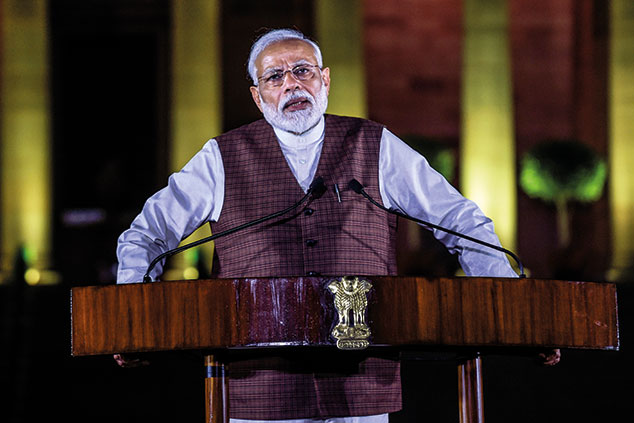
The country’s central bank cut interest rates to a nine-year low last week as it seeks to reignite growth, which currently sits at a five-year low, writes Corinne Abrams in The Wall Street Journal. Many had hoped that India’s domestically-focused economy would be insulated from global trade tensions, but there are plenty of local problems instead. Private investment hit a 14-year low at the start of this year. “Government spending is capped by budget restrictions and consumers seem to be reining in spending.”
Many of the problems can be traced back to a shaky financial system, writes Yigal Chazan in The Diplomat. India’s state banks are “mired in a non-performing loan crisis, with some $150bn of bad loans”. And a confidence crisis in the nation’s overleveraged non-banking financial
sector – or “shadow banks” – has seen them rein in lending as well. The result is a credit squeeze that is making life difficult for business.
A growth mirage
Official data show that India lost its title as the world’s fastest-growing major economy to China in the first quarter of this year, with growth falling to an annual rate of 5.8%. Yet even that figure may be artificially inflated.
India’s boast of “miracle” 7.5% growth has attracted more than $350bn in foreign investment over the past seven years, says The Economist. Yet Arvind Subramanian, India’s former chief economic adviser, estimates that figures have been overstated by about 2.5% a year ever since 2011. If he is correct, then “rather than outperforming China, India has underperformed Indonesia”.
Those betting that Modi would take bold measures to revive the economy have also been disappointed, reports Parkin. The latest annual budget was judged a missed opportunity to initiate the kind of bold reforms needed if he is to hit ambitious growth targets.
In the long run there is still much to like in India. Half of the population is under 25 and the middle class is rapidly expanding. The Mckinsey Global Institute forecasts that by 2025 “India will have 69 cities with a population of more than one million each”. By 2030, Mumbai’s economy alone will be bigger than the whole of Malaysia’s economy is today.
Yet with a drumbeat of bad news hitting sentiment, and stockmarket valuations elevated – shares trade on a price/earnings ratio of 27.5 – the coming months are unlikely to bring investors much joy.
Crude oil is back in a bear market
Talk of a global economic slowdown is like a “bubonic plague for oil demand”, Robert McNally of Rapidan Energy Group tells The Wall Street Journal. Last week Brent crude slid into a bear market after dropping more than 20% since its April high. The European oil benchmark was trading this week at less than $61 per barrel.
The falls came as the International Energy Agency (IEA) cut its forecasts for worldwide oil demand for this year and next, reports Matt Egan for CNN. The IEA says that “oil demand grew at the weakest pace since 2008” during the first five months of 2019. In developed nations oil demand has fallen for three quarters in a row. “That hasn’t happened since 2014.”
The slump is a surprise given the rocky supply picture, writes Andy Critchlow in The Daily Telegraph. Tensions in the straits of Hormuz have raised fears of global shipments being “choked off” by Iran, whilst sanctions on Tehran and Venezuela have also squeezed supply.
Yet the rise of shale technology means that the US is now the world’s largest producer of crude. Oil major Shell says its US wells can “turn a profit at $35 per barrel”. That puts oil cartel Opec in a bind. “Arab kingpins” need prices closer to $80 a barrel to sustain “their high-spending autocratic economies”. Yet further production cuts would be difficult to enforce and could ignite the ire of Trump. “Opec has no easy answer.”